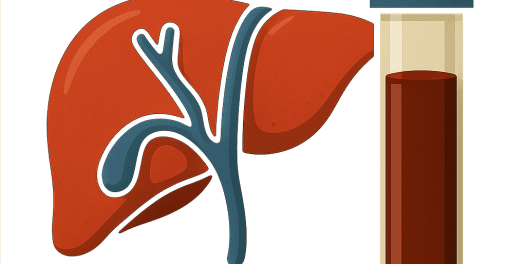AST (SGOT) test: Understanding your liver enzyme results
Receiving blood test results can raise questions, particularly about specific lines like “AST (SGOT).” A number next to this term, perhaps flagged as outside the normal range, may lead to uncertainty. This article aims to clarify what an AST (SGOT) test measures, how to interpret the value, and what the potential implications are. The goal is to provide clear, factual information to facilitate an informed and productive discussion with a healthcare provider.
What is the AST (SGOT) enzyme?
Aspartate aminotransferase (AST), formerly known as serum glutamic-oxaloacetic transaminase (SGOT), is a vital enzyme. It is present in various cells throughout the body and plays a key role in metabolism.
Role and definition
The primary function of the AST enzyme is to help metabolize amino acids, which are the fundamental building blocks of proteins. The liver, for example, is a major site of AST production. When the body processes proteins from food, AST facilitates their conversion into energy that cells can use. This process is essential for numerous bodily functions.
Where is AST found in the body?
It is important to understand that AST is not exclusive to the liver. It is also found in significant concentrations in other organs and tissues. These include the heart muscle, skeletal muscles, the kidneys, and the brain. The body utilizes this enzyme for specific biochemical reactions, primarily to transfer amino groups between amino acids, a process known as transamination.
How does AST enter the bloodstream?
Under normal circumstances, AST remains mostly within the cells. Therefore, only small amounts are typically detectable in the bloodstream. However, when cells are damaged by inflammation, injury, or disease, their outer membranes can rupture. This rupture allows the cell’s contents, including AST, to leak into the blood. Consequently, the measurable level of AST in a blood sample increases.
Why is monitoring your AST level important?
The measurement of AST levels is a standard part of assessing a person’s health, especially liver function. An elevated result from an AST (SGOT) test can be an early indicator of an underlying medical issue.
The AST test as a health indicator
An abnormal AST level can signal potential health problems, sometimes even before clear symptoms develop. This makes the AST (SGOT) test a valuable tool in preventive medicine, as it can prompt further investigation and allow for timely intervention if needed. Because AST is present in multiple organs, a doctor will always interpret the result in the context of other tests and a person’s overall health.
How AST levels influence medical decisions
In clinical practice, the AST level is a key piece of data that helps guide a doctor’s next steps. For instance, a persistent, moderately high AST level might lead a physician to recommend an abdominal ultrasound to get a visual of the liver. A significantly higher level could warrant more specialized tests to determine a precise diagnosis. These decisions are based on established medical guidelines and protocols.
How to read and interpret your lab results
When reviewing a blood test report, AST (SGOT) is usually listed within the “Liver Panel” or “Enzymology” section. The format can vary slightly between laboratories.
Understanding the information in your report
A typical report will provide the following details:
- The name: Aspartate Aminotransferase
- The abbreviation: AST or SGOT
- Your measured value: Expressed in international units per liter (IU/L) or U/L
- The reference range: The range of values considered normal for that lab
- A flag: A symbol (e.g., an arrow ↑) or color code may be used if a result falls outside the reference range.
Reference values for the AST test
Reference ranges for AST can differ slightly based on the laboratory’s equipment, methods, and local population data. However, for most adults, a normal AST (SGOT) value is generally considered to be between 8 and 40 IU/L. It is essential to use the specific reference range provided on your report.
The importance of medical interpretation
It is crucial to remember that a lab result cannot be interpreted in isolation. Only a qualified healthcare professional can provide a final interpretation. They will consider your complete medical history, lifestyle factors, any medications you are taking, and the results of other biological tests to understand the full picture.
What causes variations in AST levels?
An abnormal AST (SGOT) level can result from a wide variety of conditions, from common and manageable issues to more serious diseases. The degree of elevation often provides clues to the underlying cause.
Causes of moderate elevations
A moderate increase, typically up to 3 times the upper limit of normal, is the most frequently observed abnormality.
Non-alcoholic fatty liver disease (NAFLD)
NAFLD is a leading cause of moderately elevated AST in many parts of the world. In this condition, excess fat accumulates in liver cells, leading to inflammation and cell damage that releases AST into the blood. It often presents with few or no symptoms.
Alcohol consumption
Regular and excessive alcohol intake is toxic to liver cells (hepatocytes) and is another common reason for a raised AST. In cases of alcohol-related liver injury, the AST level is often significantly higher than the ALT level, with an AST/ALT ratio greater than 2 being a strong indicator.
Causes of marked AST elevations
A more substantial increase, from 3 to 10 times the normal limit, often points toward more acute conditions.
Acute viral hepatitis
Infections with hepatitis A, B, or C viruses can cause direct and significant damage to liver cells. This leads to a sharp immune response and the release of large amounts of AST. Symptoms may include severe fatigue, nausea, and jaundice.
Significant muscle injury
Because AST is also present in muscle, widespread muscle damage can cause a marked increase in blood levels. This can occur after extremely intense exercise, physical trauma, or as a result of certain muscle diseases (myopathies). In this case, another muscle enzyme, creatine kinase (CK), will also be very high, helping to differentiate the source of the AST.
Causes of severe elevations
An extremely high AST level, often more than 10 times the normal limit, signals extensive and acute cell damage.
Drug-induced or toxic hepatitis
Certain medications, especially in overdose (e.g., paracetamol/acetaminophen), or exposure to some toxins can cause rapid and widespread destruction of liver cells. This is a serious medical condition requiring immediate attention.
Acute hepatic ischemia
Also known as shock liver, this condition occurs when the liver’s blood supply is suddenly and drastically reduced, such as during circulatory collapse. The lack of oxygen leads to the death of liver cells and a massive release of AST. This is a medical emergency.
What about lowered levels?
A low AST level is uncommon and generally less of a clinical concern than an elevation. It can sometimes be seen in patients with end-stage kidney failure or a deficiency in vitamin B6, which is a necessary cofactor for AST enzyme activity.
What to do if your AST level is abnormal
An abnormal AST result from a blood test warrants a follow-up discussion with your doctor. The following are general guidelines, not a substitute for professional medical advice.
For a slight elevation (1 to 2 times normal)
A minor increase is not always indicative of a serious issue. Your doctor will likely recommend repeating the test in 1 to 3 months to see if the level returns to normal or persists. Lifestyle adjustments, such as reducing alcohol intake, maintaining a healthy weight, and eating a balanced diet rich in fruits and vegetables, may be beneficial.
For a moderate elevation (2 to 5 times normal)
A more significant increase requires a more thorough evaluation. Your doctor will likely schedule a consultation and may order additional tests, such as an abdominal ultrasound or blood tests for viral hepatitis, to identify the cause. It is important to avoid alcohol completely and discuss all medications and supplements with your provider.
For a marked elevation (more than 5 times normal)
A high elevation requires prompt medical attention. If the result is accompanied by symptoms like jaundice, severe abdominal pain, nausea, or extreme fatigue, it may be necessary to seek urgent care. A doctor needs to investigate the cause immediately to begin appropriate treatment.
Frequently asked questions
Here are answers to common questions regarding the AST (SGOT) test.
Can exercise affect my AST test results?
Yes. Strenuous or intensive physical activity, particularly resistance training, can cause temporary micro-trauma to muscles. This can lead to a release of AST, increasing levels in the blood for 24 to 72 hours. It is often advisable to avoid intense exercise for 48 hours before a planned blood test.
How do doctors distinguish a liver from a muscle origin?
To determine the source of a high AST, doctors simultaneously measure other enzymes. If both AST and creatine kinase (CK), a muscle-specific enzyme, are high while alanine aminotransferase (ALT) is relatively normal, a muscular origin is likely. If AST and ALT are both high with a normal CK, a liver condition is more probable.
Can some medications raise AST without being dangerous?
Several common medications can cause a mild, temporary increase in AST that does not necessarily signify liver damage. These include statins, some antibiotics, and nonsteroidal anti-inflammatory drugs (NSAIDs). It is crucial never to stop a prescribed medication without first consulting your healthcare provider.
My AST is normal but my ALT is high. Should I be concerned?
ALT is more specific to the liver than AST. An isolated elevation in ALT may suggest a mild or early-stage liver issue, such as non-alcoholic fatty liver disease. While generally less concerning than a joint elevation of both enzymes, it still warrants medical follow-up and monitoring.
When should I seek emergency care for a high AST level?
An AST value that is more than 10 times the upper limit of normal (e.g., >400 IU/L) requires urgent medical evaluation. This is especially true if it is accompanied by symptoms like jaundice (yellowing of the skin and eyes), severe abdominal pain, vomiting, or very dark urine.
Is it possible to have liver disease with a normal AST?
Yes, in some situations. Certain chronic liver conditions, such as advanced cirrhosis or some forms of chronic hepatitis, can sometimes present with normal or only slightly elevated AST levels. For this reason, assessing liver health always involves a combination of clinical evaluation, multiple blood markers, and sometimes medical imaging.
Conclusion: An AST test is a key health marker
In summary, the AST (SGOT) test is a valuable biomarker that provides insight into the health of several organs, most notably the liver. A proper interpretation of the result, performed by a healthcare professional, is essential for early detection of potential health issues, monitoring chronic conditions, and guiding lifestyle choices to protect your health. Always take an active role in understanding your health by discussing your lab results with your doctor.
Additional Resources
To further your understanding of this blood marker, here’s a reliable resource:
Decode Other Markers
You may also like

Total proteins blood test: Understanding and interpreting your results

Gamma-glutamyl transferase (GGT): A complete guide to this liver enzyme

Alkaline phosphatase (ALP) test: understanding your results for health insights
